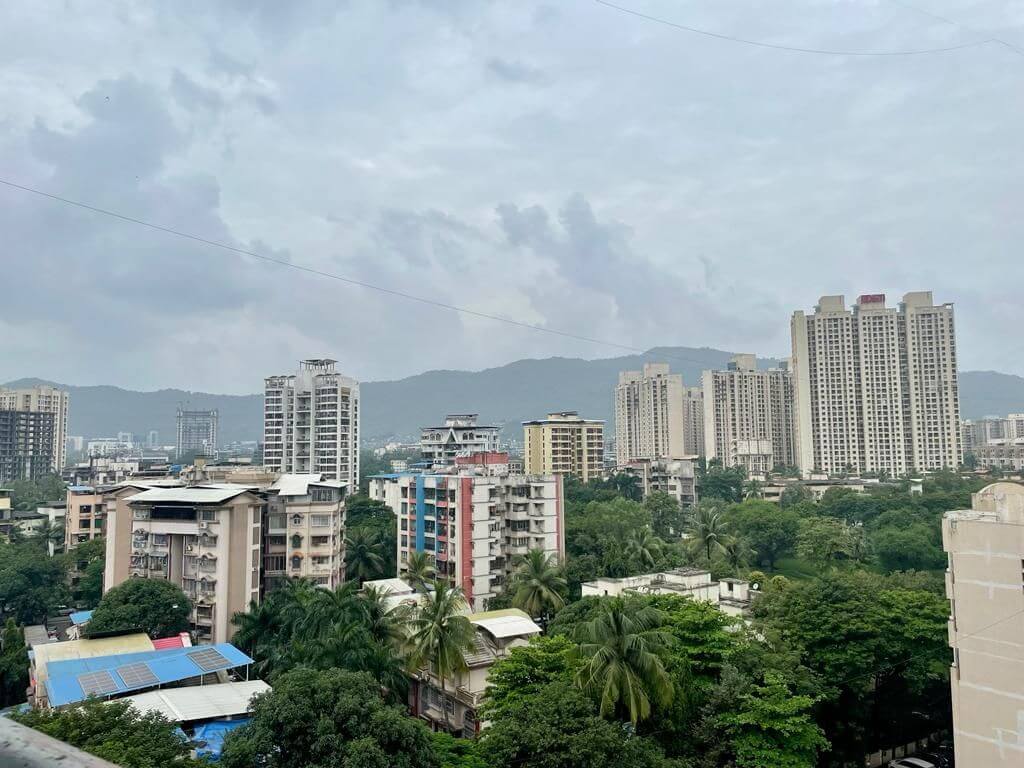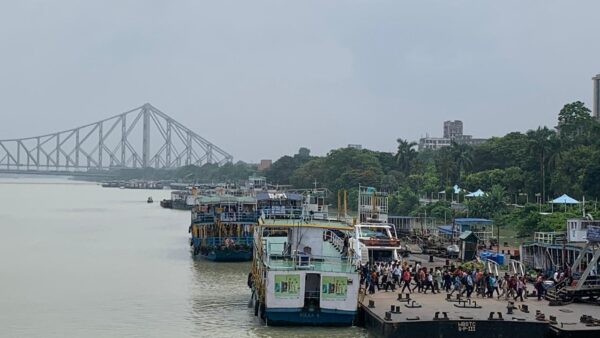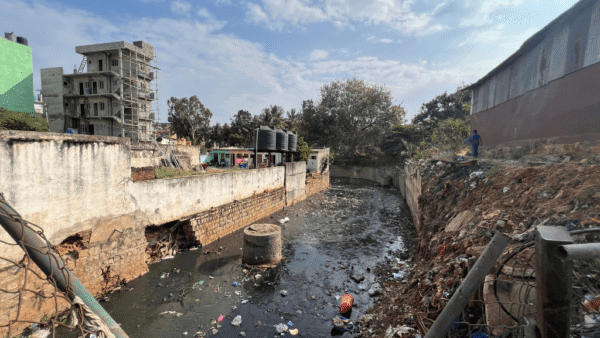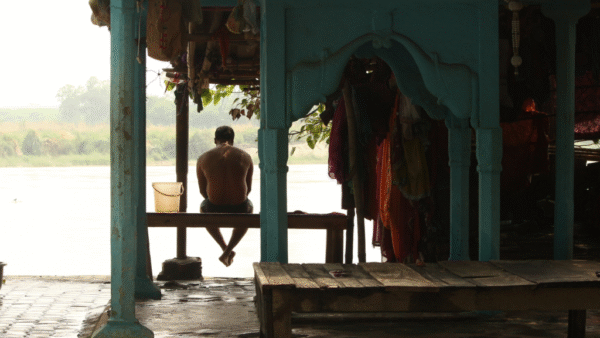If there was an environmental litmus test for people in cities, builders and real estate developers would fail it spectacularly – and nowhere more so than in Mumbai. Their association has been arguing in the National Green Tribunal (NGT) and fighting it out in the Bombay High Court to not provide the mandated open space, in construction projects, at the ground level to plant trees. That men with enormous clout to shape the built environment of Mumbai have to fight against trees – placing profits from land above trees – shows why our cities are being stripped off their green cover.
This story took shape about a year ago when the NGT passed an order, based on a Supreme Court judgment,[1] holding that builders should provide recreational or open space at the ground level which should be open to the sky and enable tree plantation. If a construction project failed to provide this space, then it should not be allowed to proceed, the tribunal directed, drawing the attention of the State Environment Impact Assessment Agency to this aspect when projects were evaluated for environmental clearance.
The emphasis was on open space and trees at the ground level – mother earth, as it was described in the case – and not merely on the podium or a raised height in the building. It should not have had to be spelt out but it did – trees need the ground and soil as much as the earth and air need the canopy. Yet, builders were fighting in courts to not provide the necessary and adequate space for trees, that too when Climate Change impact looms large. Future generations will scarcely believe this.
At least two critical aspects need attention. Firstly, trees are considered superfluous, not crucial or core, to the environment of the place and well-being of people. And secondly, trees are not taken into account at the planning stage of infrastructure or construction projects. Most major cities across India have lost their green cover in large proportions even as the pace of ‘development’ rapidly increased in the past few decades. For example, New Delhi lost more than 60,000 trees in seven years till 2022[2]; importantly, these were felled with permission from the authorities. Mumbai lost 2,028 hectares of green cover between 2016 and 2021, according to the city’s climate action plan, also with permission. Trees are clearly treated as highly dispensable or obstacles as the ‘development’ juggernaut rolls on.
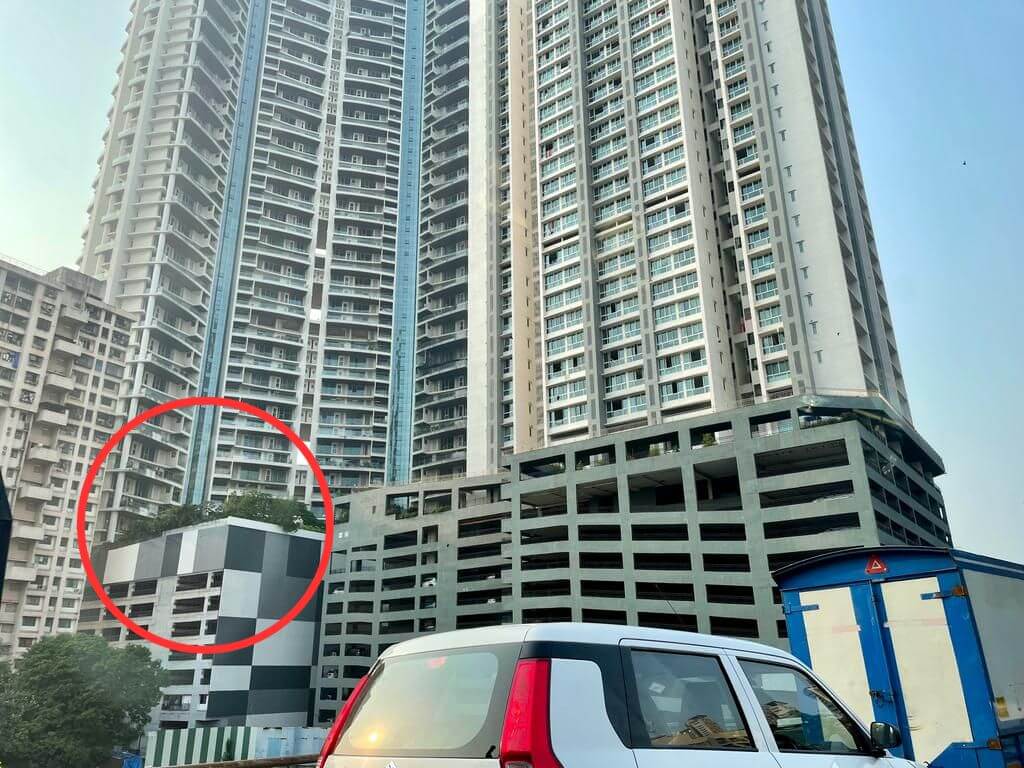
Photo: QoC
This approach leads to court cases such as the one that the builders’ association NAREDCO, or National Real Estate Development Council, mounted challenging the NGT order in the Bombay High Court. The HC ruled in its favour but underlined that it was neither examining the correctness of the order nor deciding the compliance of a proposal in the context of Mumbai’s Development Control Rules 2034. This was a single case but the juggernaut does not stop there; the precedent has been set for builders to apply for – and obtain – environmental clearance without providing ground space for trees. The Bombay HC order has since been challenged in the Supreme Court.
Builders could, in principle, construct on nearly the entire plot leaving barely 1.5 metres at the ground level along its edges for trees and, instead, provide the green cover on the podium or raised levels of the building’s elevations. Plants in pots at podium level placed around manicured green lawns, which are sometimes fake, are no substitutes for trees at the ground level. They do little for the neighbourhood, the city’s environment and Climate Change threats.
Sanctioned by rules
The idea that trees or plants can be grown on podiums is, surprisingly, built into the rules in Mumbai. Regulation 27 of the Development Control Rules 2034 states that 40 percent of the open space on a plot, including trees and plants, can be at podium level while of the 60 percent on the ground – mother earth, as it were – half has to be for trees while the other half can be paved. This Regulation also allows 1.5 metres only along the periphery of the plot for trees. Either way, the shrinking space for trees in our built environment is written into rules and official plans.
Mumbai is not the only city, though. In different ways, laws in India’s cities do not protect the existing tree cover as construction moves at a frenetic pace; in fact, trees are viewed as obstacles in the path of ‘development’. Trees do not even make it to the standard Environment Impact Assessment reports of many projects. Only when the site is surveyed, the question of chopping down trees arises. This false binary between ‘development’ and ‘environment’ is designed to fail both the people of the city and its environment, especially in the era of Climate Change.
Trees are the life of a city. Local administrations such as the Tree Authority, which should protect the tree cover and ensure successful plantations, instead sanction tree-cutting. Around 2.3 million trees across India will face the axe for major infrastructure projects this year, announced Ashwini Kumar Choubey, minister of state Ministry of Environment, Forest and Climate Change, in Rajya Sabha in February this year. Tree-cutting is accompanied by talk of “compensatory plantation” but this hardly helps. Saplings – not fully grown trees with buzzing ecosystems – are planted at a location different from where trees are felled, and the majority of them die.[3]
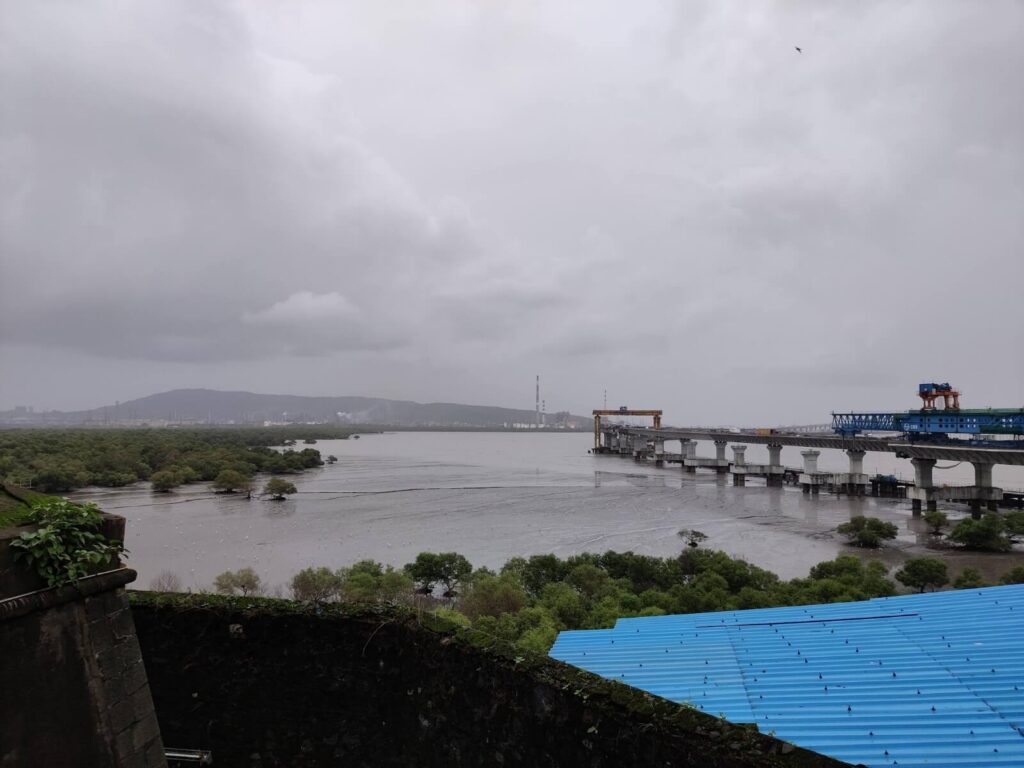
Photo: Jashvitha Dhagey
Why we need trees is a no-brainer
- Trees are the best gifts of nature to combat Climate Change. Trees and urban forests act as carbon sinks soaking up emissions, reducing air pollution, helping clean up the atmosphere.[4]
- Trees cool streets and neighbourhoods in cities, providing shade under which many urban activities take place; shaded areas, it is now proved, are cooler from 2 degrees Celsius to even 25 degrees Celsius.[5]
- Trees and gardens offer respite from the pressures of city living with recreational spaces and opportunities for community engagement. Trees have inspired art and reading clubs in their midst.
- Trees absorb rainwater, help in controlling urban floods, especially during intense or extreme weather events. Trees enrich the top soil, so essential for soil health, and enable groundwater to be recharged.[6]
- Trees, even in cities, provide medicines and herbs; trees have entire ecosystems which nurture other life-cycles and biodiversity that cannot be easily replicated.
- Trees are necessary for the process of evapotranspiration – the process by which water is transferred from the land to the atmosphere by evaporation from the soil and other surfaces, and by transpiration from trees or plants.[7]
For all these and more functions, trees of certain species and vintages are essential at the ground level, not on podiums or built-up spaces. Plants on podiums are ill-equipped to perform these functions. Yet, urban planning hardly acknowledges trees or incorporates tree-based, or nature-based, approaches. On the contrary, trees have routinely been seen as impediments as in the Aarey forest.[8] The Mumbai-Ahmedabad high-speed or bullet train project will claim 1,828 trees in Vikhroli. It’s the same story in other cities too. As the tree cover gets depleted, the relationship between people and nature in cities too gets eroded, fragmented.
Trees as urban essentials
Trees are indicators of a city’s health. The greener a neighbourhood, the healthier the place and people there. The UN mandates at least 10 trees per person for a healthy environment. The per capita tree cover in Delhi in 2018 was barely 0.28 to 0.3 hectares – less than one tree per person – according to the last State of Forest report. Mumbai has one tree for every four people or less than half a tree per person in Mumbai, according to 2017 data released by Praja Foundation.
When a tree is cut, the CO2 stored in it is released into the environment, adversely affecting air quality.[9] Trees are powerhouses when it comes to regulating city microclimates – filtering air pollution, providing shade, and reducing the Urban Heat Island effect that makes cities far hotter than surrounding areas.[10]
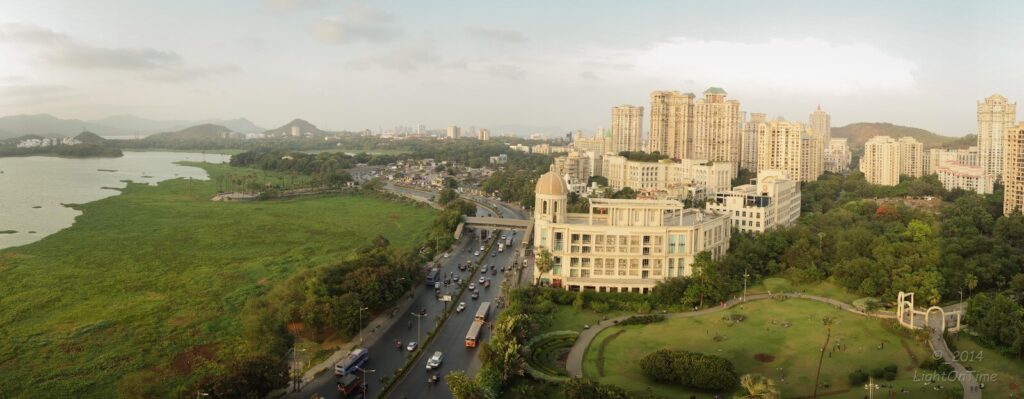
Photo: Udaykumar PR/ Creative Commons
Trees can hugely reduce surface temperatures – by 2 degrees Celsius to 20-25 degrees Celsius. Asphalt roads, lack of open spaces, high density of buildings, and lack of trees or green cover is a recipe for Urban Heat Islands. Research shows the absence of trees can impact human health; planting more trees could decrease deaths directly linked to hot weather and heatwaves by a third.[11]
Besides, tree roots stabilise the soil, tree canopies act as cushions during heavy downpour and reduce soil erosion, they buffer noise and filter stormwater. People in cities with a substantial tree cover possess better health immunity; trees boost oxygen levels and lessen blood pressure and anxiety; biochemicals released from trees contain even antibiotic, antifungal and anti-rheumatic properties.[12] Trees ought to be seen and treated as essential elements in urbanisation.
Vanishing greens and calamities
Assam’s capital Guwahati, which has lost one thousand hectares of tree cover from 2001 to 2020, sees an increased intensity of the floods every year.[13] Other large cities have seen depletion of trees too. In Bhubaneswar, 870 old trees were chopped down last year for swanky high-rises. Between 2010 and 2021, as many as 21,000 trees were felled in Mumbai, roughly 2,000 trees every year or six a day, according to civic data.
Kolkata’s tree cover saw a dramatic drop from 23.4 percent to 7.3 percent over 20 years till 2016 while its built-up area went up by a staggering 190 percent; Ahmedabad’s tree cover fell from 46 percent to 24 percent over 20 years while the city’s built-up area went up 132 percent, according to a study by an Indian Institute of Science team.[14]
Prof. TV Ramachandran and his team at the Institute used satellite-borne sensors to gather data, compared images over decades, and modelled past and future growth of urbanisation in four Indian cities. Road networks, railway stations, and industries though “drivers of growth” were also “agents of change” for the ecology in each city, they stated.
The visuals of flooded roads and rail tracks during monsoon have become common but these events are rarely linked to the absence of trees. In July, Delhi witnessed one of its worst floods; flash floods in Himachal Pradesh triggered landslides; Sikkim continues to reel in the aftermath of flash floods on October 4. Forest land of 103.79 hectares was diverted in Delhi in the past 15 years for development projects, ironically, under the Forest Conservation Act 1980, shows government data.[15]
Much was made of Mumbai bagging the Tree City of the World tag last year, but this is determined by certain boxes being ticked off irrespective of trees chopped, badly pruned, or saplings dying.[16]
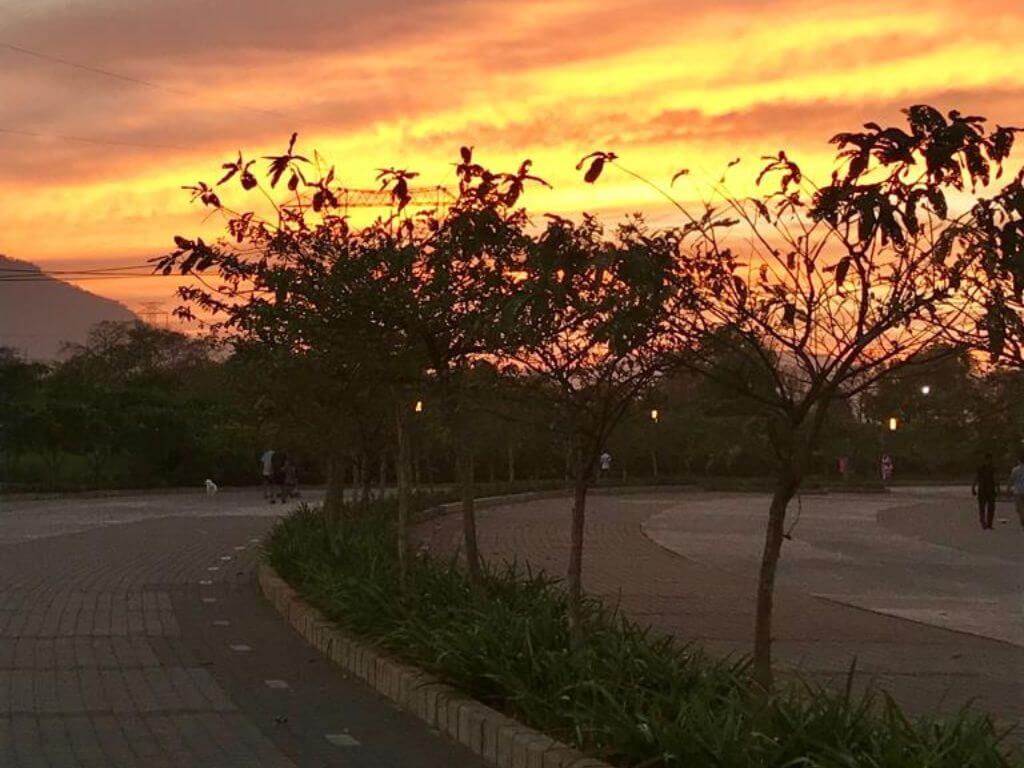
Photo: QoC
Tree equity and tree authorities
Along with the depletion of trees and green cover, another issue demands attention – tree equity. Studies point to unequal distribution of trees in cities, with a pronounced absence of or fewer parks and gardens in lower-income areas. In New York, this study showed[17] that the green cover was denser and better-planned in wealthier areas. Studies by the European Environment Agency found that green spaces are less available in low-income neighbourhoods compared to others across Germany, the Netherlands, and Portugal.[18]
Similar studies for Indian cities are hard to come by but anecdotal evidence in many cities shows this trend. The posh Lutyens in Delhi boasts of 125 species of trees, more than in other areas. Most of Mumbai’s open spaces and large gardens are in the south of the city while the Sanjay Gandhi National Park and Aarey are at its northern edges; these are averaged across the city’s population. When parsed, they show that over four of every ten Mumbaikars do not have a garden or park within a kilometre of their home, according to official data itself. The World Health Organization[19] recommends that every person should have access to at least two hectares of green space, not more than 300 metres away from their home.
Equitable distribution of trees in a city is important but, first, trees have to be preserved or planted at the ground level.
Tree authorities, formed by municipal corporations and councils, have drawn flak for their shoddy functioning or sanctioning tree-felling and indiscriminate pruning. In July, the Maharashtra (Urban Areas) Protection and Preservation of Trees Act 1975 was amended to empower local bodies to permit tree-felling, including heritage ones, without referring to the State Tree Authority. At the national level, the recent amendment to the Forest Conservation Act, 1980, invited widespread criticism.[20]
Trees in our cities need more of the exemplary Karnataka Preservation of Trees Act (KPTA) which seeks public permission before the government decides to fell trees. This is on paper but it is a start. For cities to be environmentally healthy and sustainable, trees should be the first bulwark – and an essential component of city-making.
Shobha Surin, currently based in Bhubaneswar, is a journalist with 20 years of experience in newsrooms in Mumbai. She has seen Bhubaneswar from close quarters as the quiet green city transformed into a bustling concrete jungle. An associate editor at Question of Cities, she is concerned about Climate Change and is learning about sustainable development.
Cover photo: Smruti Koppikar

